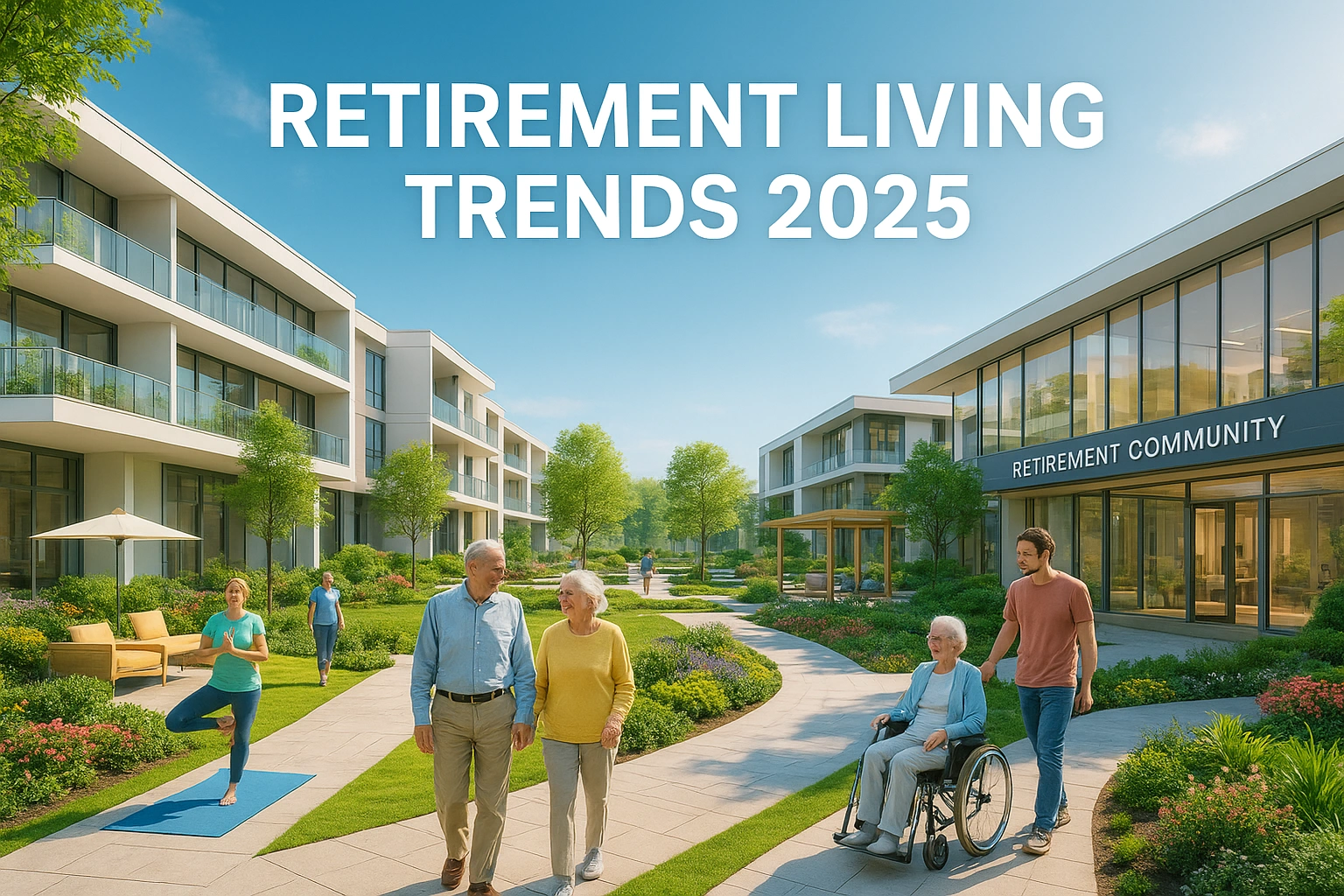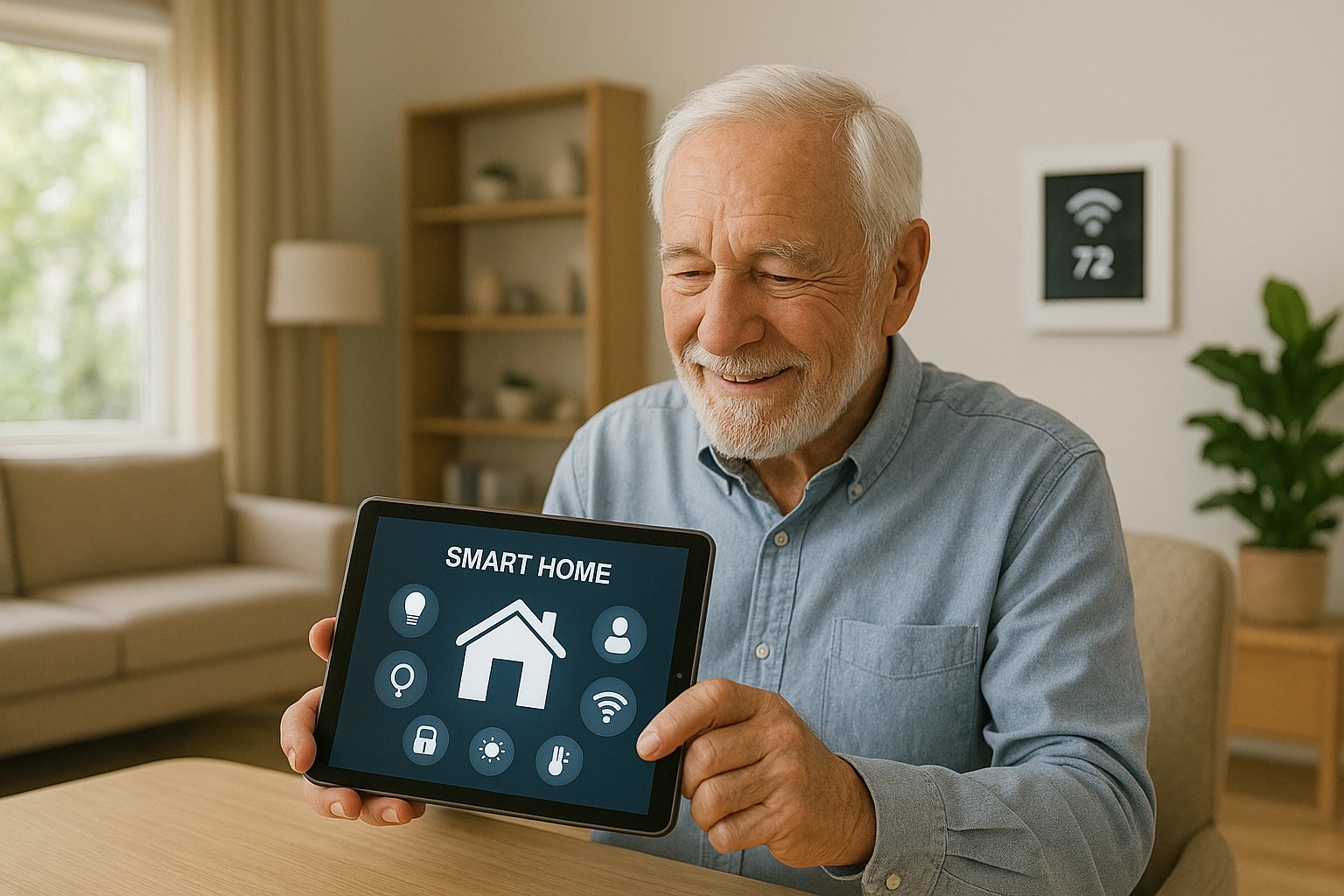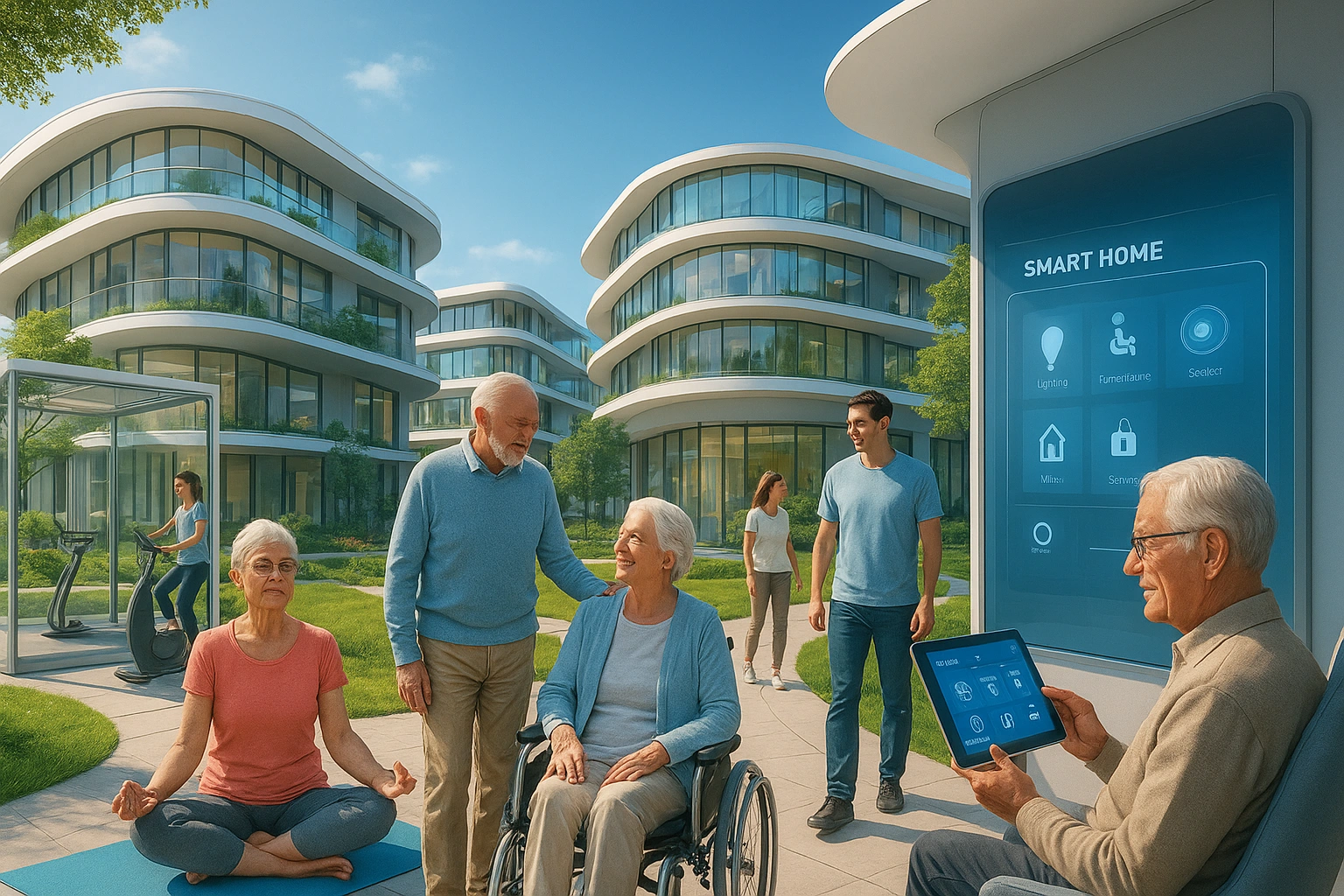
What Are the Driving Forces Behind These Trends?
As detailed in publications like Wired, which frequently covers the intersection of aging and technology, the fusion of smart-home tech, data analytics, and a consumer-driven demand for personalization is creating a new paradigm. The future of senior housing is less about a place you go when you need care, and more about a lifestyle you choose to enhance your health and happiness.
Why These Innovations Matter for Seniors
These emerging trends are more than just fancy bells and whistles; they offer profound benefits that directly address the core challenges and desires of aging.
Greater Independence and Autonomy
Smart-home technology, from automated lighting to voice-activated controls, empowers seniors to live more independently and safely in their own space. Telehealth integration means fewer trips to the doctor’s office, further enhancing personal freedom.
Proactive and Personalized Healthcare
Wearable sensors and passive monitoring can detect subtle changes in gait or sleep patterns, alerting staff to potential health issues before they become critical. This shifts the healthcare model from reactive to preventative, leading to better outcomes.
Enhanced Social Connection and Purpose
Trends like intergenerational living and niche affinity communities combat loneliness by creating environments rich with purpose and shared identity. As research on platforms like peternakan.web.id often highlights, social connection is a powerful determinant of health.
The Top 5 Retirement Living Trends for 2025
Here are the most impactful innovations you can expect to see in forward-thinking senior communities.

1. Fully Integrated Smart-Home Technology
This goes beyond a voice assistant playing music. It involves a network of passive sensors that monitor daily activity, smart pill dispensers that remind and record, and lighting that adjusts automatically to reduce fall risk. It’s technology that works quietly in the background to enhance safety and well-being.
2. A Focus on Holistic, Data-Driven Wellness
Wellness is no longer just a fitness room. It’s a comprehensive philosophy that includes personalized nutrition plans, mental health resources, mindfulness and meditation classes, and spiritual care. Wearable technology provides data that helps staff create truly personalized wellness plans.
3. The Rise of Intergenerational Living
Communities are being designed to purposefully mix age groups. This can involve building senior apartments on a university campus, where students can exchange housing for companionship, or creating mixed-use developments with senior housing, family condos, and retail space all in one place.
4. Niche and Affinity Communities
Recognizing that shared interests build strong bonds, developers are creating communities for specific groups. Imagine a retirement community for retired educators, one with extensive art studios for lifelong artists, or an LGBTQ+-focused community that provides a safe and affirming environment.
5. Seamless Telehealth Integration
The future of senior housing includes dedicated telehealth suites with high-definition cameras and diagnostic tools, allowing residents to have routine appointments with specialists from around the world without ever leaving their community.
The Future in Action: A Real-Life Scenario
Meet Maria, 82, living in a 2025 retirement community. She wakes up as her smart blinds gently open. A sensor in her bed has already logged her sleep quality. After a yoga class, she has a virtual check-up with her cardiologist from the community’s telehealth room. In the afternoon, she mentors a university student who lives in the same building. This seamless blend of proactive health monitoring, convenient care, and meaningful connection showcases how these retirement living trends 2025 will work together to create a richer, safer, and more engaging life.
Comparing Traditional vs. Future-Focused Communities
The difference between the old model and the new is stark.
| Feature | Traditional Community | Future-Focused Community (2025+) |
|---|---|---|
| Healthcare | Reactive (responds to incidents) | Proactive (uses data to prevent incidents) |
| Technology | Pull-cords and basic Wi-Fi | Integrated smart-home, wearables, telehealth |
| Social Model | Age-segregated | Intergenerational and affinity-based |
| Wellness | Optional exercise classes | Holistic, personalized wellness programs |
Common Mistakes to Avoid When Choosing a Modern Community
As you explore these advanced options, be aware of potential pitfalls.
- Ignoring the Technological Infrastructure: Don’t just ask if they have Wi-Fi. Ask about its speed, reliability, and if they have dedicated IT support for residents.
- Choosing Tech Over Touch: Advanced technology is wonderful, but it’s no substitute for a warm, caring, and engaged staff. Observe the human interactions in the community.
- Overlooking Data Privacy Policies: With smart-home monitoring comes a lot of personal data. Ask how that data is stored, who has access to it, and what their privacy policies are.
- Not Asking About “Future-Proofing”: Technology changes rapidly. Ask the management what their plan is for upgrading and integrating new technologies over the next 5-10 years.
Expert Tips & Best Practices
Use these insider strategies to find a truly forward-thinking community.

- Take a “Tech Tour”: Ask for a specific demonstration of their smart-home features, telehealth suite, and resident app. Test them out yourself.
- Talk to the Wellness Director: Go beyond the marketing director. A conversation with the wellness director will give you a much deeper understanding of their philosophy and the programs they offer.
- Ask About Pilot Programs: “Innovative communities are always testing new technologies or programs,” says gerontechnologist Dr. Lisa Franklin. “Asking about current pilot programs shows you which communities are truly committed to staying on the cutting edge.”
- Look for Flexibility and Choice: The future of senior living is about personalization. Look for communities that offer flexible dining credits, a wide variety of activities, and the ability to customize your living space.
Frequently Asked Questions (FAQ)
Q: Will technology in senior living replace human caregivers?
A: No. The goal of technology in senior living is to augment, not replace, human care. Smart technology can handle routine monitoring, data collection, and alerts, freeing up human caregivers to focus on what they do best: providing compassionate, hands-on support, and meaningful social interaction.
Q: Are these tech-heavy, wellness-focused communities more expensive?
A: Initially, communities with advanced technological infrastructure and extensive wellness programs may have higher upfront or monthly costs. However, the long-term value can be significant. By promoting preventative health and early intervention, these trends can potentially reduce future healthcare costs, representing a proactive investment in long-term well-being.
Q: What is an ‘affinity community’?
A: An affinity community is a retirement community built around a shared interest, background, or lifestyle. Examples include communities for university alumni, retired artists, LGBTQ+ seniors, or even specific hobbies like aviation. They offer a powerful, built-in sense of belonging and shared identity.
Q: How is dining changing in future senior housing?
A: The trend is moving away from rigid, cafeteria-style dining toward flexible, restaurant-quality experiences. This includes multiple dining venues (bistros, formal dining rooms), farm-to-table menus with locally sourced ingredients, and a strong emphasis on nutrition that is both healthy and delicious, often with the guidance of on-site nutritionists.
Q: What is the biggest challenge facing the future of retirement living?
A: A major challenge is affordability and accessibility. While the luxury market is innovating rapidly, the industry is also grappling with how to bring these technological and wellness benefits to a middle-income demographic. Creating scalable, cost-effective models for the future of senior housing is a key focus for providers and policymakers.
Conclusion
To stay on top of these trends, publications from organizations like the MIT AgeLab provide cutting-edge research on the future of aging. Your best retirement is in a future you choose today.
Which of these future trends are you most excited about? Share your thoughts in the comments!
